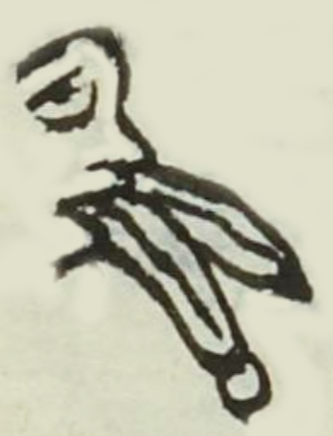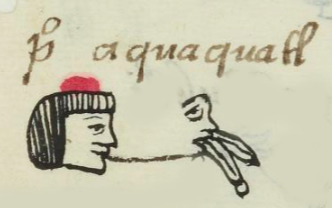Acuacuatl (MH877v)
This black-line drawing of the compound glyph for the personal name Acuacua (“Large Venomous Toad”) is attested here as a man’s name. The glyph shows the face of a man in profile, looking toward the viewer’s right. Coming out of his mouth are two squirts of water (atl), each one with a line of current down the middle, and one has a droplet or bead at the end.
Stephanie Wood
The placement in the mouth intends cua (to bite or eat), and perhaps the two streams are a visual reduplication. Both elements are phonetic indicators (A + cua + cua) that are not meant literally but provide the name of a large, venomous toad (acuacua). See below for other examples of glyphs that include a cua element.
Stephanie Wood
po aquaquatl
Pedro Acuacuatl
Stephanie Wood
1560
Jeff Haskett-Wood
sapos, venenos, agua, tomar, beber, morder, comer, nombres de hombres

acuacua, venomous toad, https://nahuatl.wired-humanities.org/content/acuacua
Sapo Grande y Venenoso
Stephanie Wood
Matrícula de Huexotzinco, folio 877v, World Digital Library, https://www.loc.gov/resource/gdcwdl.wdl_15282/?sp=827&st=image.
This manuscript is hosted by the Library of Congress and the World Digital Library; used here with the Creative Commons, “Attribution-NonCommercial-ShareAlike 3.0 License” (CC-BY-NC-SAq 3.0).




